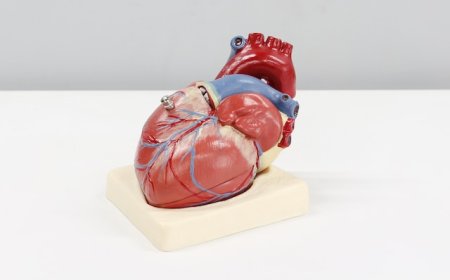Understanding the Human Digestive System: The Path of Food from Ingestion to Excretion
Dive into the fascinating journey of food, through our digestive system. We simplify complex scientific concepts, connecting them with your daily experiences for better understanding

Every day, we eat food and it magically disappears, but have you ever wondered where it goes? Welcome to the fascinating world of our digestive system, where food embarks on an incredible journey from mouth to anus. This article breaks down these complex scientific concepts into easy-to-understand explanations.
Imagine the digestive system as a well-organized factory. The moment food enters your mouth, the magic begins. Just like factory workers, your teeth, tongue, and saliva work together to mechanically break down the food. In this initial phase, if your food contains starch, chemical digestion also starts right in your mouth.
The food, now a soft ball called a bolus, embarks on a short, swift journey down the oesophagus. Like a parcel on a conveyor belt, it is moved by a process called peristalsis into the stomach.
The stomach, a muscular bag, acts like a food processor. It churns the food into a semi-liquid mixture known as chyme using muscular contractions. This chyme is then slowly released into the small intestine, which could be compared to a complex chemical lab.
In the small intestine, the chyme meets pancreatic juices and bile from the gall bladder, which aid in digesting fats, proteins, and carbohydrates. Imagine these secretions as special enzymes that unlock the nutrients in your food.
As chyme moves down the small intestine, millions of tiny finger-like projections called villi absorb nutrients into the bloodstream. Consider these villi as diligent delivery agents ensuring that the nutrients reach their destination - your cells.
The leftovers, undigested food, pass into the large intestine. This could be likened to a recycling plant where resident bacteria ferment whatever is left, producing short-chain fatty acids and vitamin K.
The large intestine also absorbs water and electrolytes, making the stool solid. It's temporarily stored in the sigmoid colon until it's time for it to leave the body. This is similar to the factory's waste management system, packaging the leftovers to be disposed of.
Finally, the rectum and anus come into play, acting like the factory's exit gates. The muscles here produce the desire to defecate, completing the journey of food from mouth to anus, which usually takes about 24-72 hours in a healthy adult.
In understanding this intricate process, we can better appreciate the importance of a balanced diet and proper hydration. Every bite we take triggers this incredible journey, and every sip of water aids in the smooth operation of this amazing factory inside us.
By connecting these scientific concepts with daily experiences, we hope to inspire a new appreciation for your body's remarkable digestive system. Here's to better digestive health!
Disclaimer: The image(s) featured in this article are for illustrative purposes only and may not directly depict the specific concepts, situations, or individuals discussed in the content. Their purpose is to enhance the reader's understanding and visual experience. Please do not interpret the images as literal representations of the topics addressed.
What's Your Reaction?












































































































